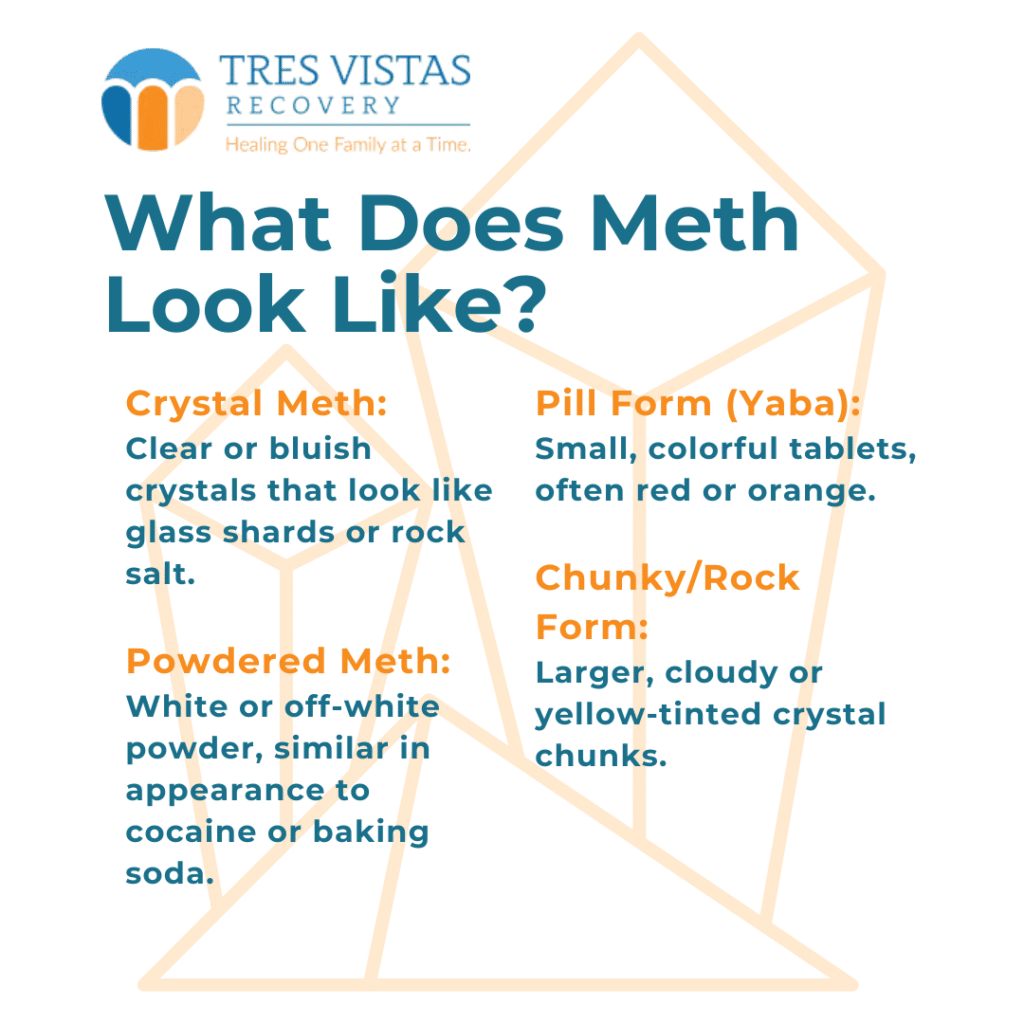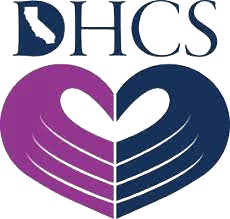Methamphetamine, commonly known as meth, is a highly addictive and dangerous stimulant that affects the central nervous system. The prevalence of meth use has been alarming; according to the National Institute on Drug Abuse (NIDA), in 2021, about 2.5 million people in the United States reported using meth in the past year. This widespread use has severe implications for public health, leading to a cascade of issues, including severe physical health problems, psychological disorders, and substantial social consequences.
Meth’s impact on individuals and communities is profound and multifaceted. It can lead to devastating health problems, such as cardiovascular issues, cognitive deficits, and severe dental problems, often referred to as “meth mouth.” Additionally, meth addiction is linked with increased rates of crime, family disruption, and financial instability, further exacerbating its societal toll. Recognizing meth in its various forms is crucial for early intervention and prevention. Methamphetamine can appear in several forms, including crystal, powder, base, and pills, each with distinct visual characteristics. Being able to identify these forms can aid in early detection and prompt intervention, potentially saving lives and reducing the spread of its harmful effects.
By understanding what meth looks like and recognizing the signs of meth use, individuals and communities can better identify and address meth-related issues. Early recognition and action are vital steps in combating the detrimental effects of methamphetamine addiction. This knowledge empowers families, friends, and community members to take the necessary steps to support those affected and seek appropriate help, thereby mitigating the overall impact on society.
What Is Meth?
Methamphetamine, commonly known as meth, is a powerful central nervous system stimulant. It is known for its intense euphoric effects, which make it a popular drug of abuse. Meth is classified as a Schedule II drug, meaning it has a high potential for abuse and is available only through a non-refillable prescription. Medically, methamphetamine is prescribed in very limited cases to treat conditions such as attention deficit hyperactivity disorder (ADHD) and certain forms of obesity that have not responded to other treatments. However, these medical uses are strictly controlled and involve much lower doses than those typically abused. It is important to understand the differences between adderall vs. meth as both are used to treat ADHD but have different implications for abuse and addiction.
Recreational use of meth is driven by its potent and long-lasting euphoric effects. Users often seek the immediate and intense rush that meth provides, which is much stronger and lasts longer than that of other stimulants like cocaine. This intense high, however, comes with a high potential for abuse and addiction. Methamphetamine rapidly increases dopamine levels in the brain, a neurotransmitter that stimulates the brain’s reward system. This surge in dopamine reinforces drug-taking behavior, making it extremely addictive.
The widespread misuse of methamphetamine has significant public health implications. According to the National Institute on Drug Abuse (NIDA), methamphetamine use has been associated with numerous adverse health effects, including severe dental problems (“meth mouth”), extreme weight loss, skin sores, and increased risk of infectious diseases such as HIV/AIDS and hepatitis due to needle sharing. Additionally, chronic meth use can lead to significant mental health issues, such as anxiety, confusion, insomnia, mood disturbances, and violent behavior.
Understanding what meth is and its high potential for abuse is crucial in addressing its impact on individuals and communities. By educating the public on the dangers of methamphetamine and promoting awareness, we can help prevent new cases of addiction and support those in recovery.

Types of Methamphetamine
Crystal Meth
Crystal meth, also known as “ice” or “glass,” is the most recognizable form due to its clear, crystalline structure.
- Appearance: Resembles shards of glass or bluish-white rocks.
- Texture: Hard, brittle, and breakable into smaller pieces.
- Color: Clear, bluish-white, or slightly yellow.
- Use: Typically smoked or injected for an immediate and intense high.
Powder Meth
Powder meth is a fine, crystalline powder that is more versatile in consumption methods.
- Appearance: Looks like coarse salt, sugar, or baking powder.
- Color: White, off-white, or light yellow, depending on purity.
- Texture: Soft and easy to manipulate.
- Use: Often snorted, swallowed, mixed with liquid, or injected.
Base Meth
Base meth, sometimes called “paste” or “wet meth,” is a less refined and stronger form of methamphetamine.
- Appearance: A damp, oily, or waxy substance.
- Color: Can range from white to brown, yellow, or even pink.
- Texture: Sticky and chunky.
- Use: Typically smoked or injected.
Meth Pills
Meth is also found in tablet form, often resembling prescription medication or party drugs like MDMA.
- Appearance: Round or oval pills.
- Color: Varies, but often white, pink, or light-colored.
- Markings: May have imprints or designs, depending on the manufacturer.
- Use: Swallowed or crushed and snorted.
Visual Characteristics of Meth
Crystal Meth
Crystal meth is the most recognizable form due to its unique appearance. It looks like clear, chunky crystals or bluish-white rocks. Here are some specific characteristics:
- Color: Clear, bluish-white, or slightly yellow.
- Shape: Shards or chunks, similar to broken glass.
- Texture: Hard and brittle, can be broken into smaller pieces.
In comparison, crack cocaine, commonly referred to as crack, looks different and has distinct properties. Understanding the differences between crack vs. meth is essential in identifying and distinguishing these substances.”
Powder Meth
Powder meth is more versatile in its appearance. It can be mistaken for other powdered substances like cocaine or even crushed prescription pills. Key identifiers include:
- Color: White, off-white, or sometimes slightly yellow.
- Texture: Fine, crystalline powder, similar to coarse salt or sugar.
Base Meth
Base meth is less refined and often appears more crude compared to crystal or powder meth:
- Color: Varies widely; can be white, brown, yellow, or pink.
- Texture: Chunky, wet, and pasty; often sticky.
Meth Pills
Meth pills are usually less potent and can look like other types of medication:
- Color: Can vary, but often white or light-colored.
- Shape: Round or oval, similar to other pills or tablets.
- Markings: They may have imprints or scores, depending on their origin.
Identifying Meth by Smell and Taste
Methamphetamine can be challenging to identify by smell or taste alone, as its chemical composition and manufacturing process can vary significantly. Unlike substances such as marijuana or alcohol, meth does not always have a strong or consistent odor, making visual identification and awareness of other signs of meth use crucial.
Smell
Pure methamphetamine is typically odorless, but the production process often introduces chemical byproducts that create distinctive smells. Meth labs, where the drug is illicitly manufactured, are known for emitting strong, noxious fumes. These odors can resemble ammonia, cat urine, or cleaning chemicals like nail polish remover or paint thinner. Impure meth may also retain traces of these chemical odors, making detection possible in certain cases.
Taste
Meth is generally described as having a bitter, chemical-like taste. Users have reported it to have a sharp, unpleasant flavor with metallic or plastic-like undertones. This taste can vary depending on the substances used during production, as illicit meth is often “cut” with other chemicals or additives. However, attempting to identify meth by taste poses serious health risks, as even small amounts of the substance can be toxic.
Due to these factors, meth is most reliably identified by its physical characteristics rather than smell or taste. If you suspect the presence of methamphetamine, it is important to exercise caution and seek professional assistance rather than attempting to handle or test the substance yourself.
Signs of Meth Use
Identifying meth use involves more than just recognizing the substance. Understanding the physical, behavioral, and environmental signs can help in identifying individuals who may be using meth.
Physical Signs
- Weight Loss: Rapid and significant weight loss due to decreased appetite.
- Dental Issues: “Meth mouth” is characterized by severe dental decay and tooth loss.
- Skin Problems: Sores and scabs are caused by intense itching and skin picking.
- Dilated Pupils: Enlarged pupils even in bright light.
- Hyperactivity: Increased energy, agitation, and inability to sit still.
Behavioral Signs
- Paranoia: Extreme and irrational distrust or suspicion.
- Aggression: Increased irritability and violent behavior.
- Insomnia: Extended periods of wakefulness, sometimes lasting several days.
- Confusion: Disorganized thinking and difficulty focusing.
- Hallucinations: Seeing or hearing things that aren’t there.
Environmental Signs
- Drug Paraphernalia: Items such as glass pipes, needles, straws, and small plastic bags.
- Chemical Smell: Strong odors from meth production, often described as ammonia or cat urine.
- Clutter: Disorganized and dirty living spaces, often with scattered trash and food.
Health Risks of Meth Use
Methamphetamine use carries significant health risks, both short-term and long-term. Understanding these risks can underscore the importance of early detection and intervention.
Short-Term Health Risks
- Increased Heart Rate: Leading to high blood pressure and risk of heart attack.
- Hyperthermia: Elevated body temperature, which can cause organ failure.
- Seizures: Due to the overstimulation of the central nervous system.
- Psychotic Episodes: Including delusions and hallucinations.
Long-Term Health Risks
- Cardiovascular Damage: Chronic use can lead to heart disease and stroke.
- Mental Health Issues: Long-term meth use can cause anxiety, depression, and severe cognitive deficits.
- Infectious Diseases: Increased risk of HIV and hepatitis from needle sharing.
- Organ Damage: Severe damage to the liver, kidneys, and lungs.
Meth Addiction Treatment at Tres Vistas Recovery
At Tres Vistas Recovery, we understand the complexities and challenges of methamphetamine addiction. Our comprehensive outpatient treatment programs are designed to address the physical, psychological, and social aspects of addiction.
Our Approach
At Tres Vistas Recovery, we recognize that methamphetamine addiction affects every aspect of a person’s life—physically, psychologically, and socially. Our comprehensive outpatient programs are designed to address these challenges through personalized treatment plans. Each client receives an individualized approach tailored to their specific needs, ensuring the best chance for lasting recovery.
Medication-Assisted Treatment (MAT) is available to help clients manage withdrawal symptoms safely. By combining medical support with evidence-based therapies, we help individuals detox in a controlled, supportive environment. Our therapeutic interventions include cognitive-behavioral therapy (CBT), dialectical behavior therapy (DBT), and motivational interviewing, all of which provide clients with essential tools to reshape harmful thought patterns and develop healthier coping strategies.
In addition to individual therapy, support groups play a crucial role in the recovery process. Group therapy sessions and 12-step programs create a network of peers who understand the challenges of addiction. Family involvement is also a core component of our approach, with family therapy sessions designed to rebuild trust, improve communication, and strengthen relationships as individuals work toward sobriety.
Holistic Therapies
Tres Vistas Recovery takes a whole-person approach to healing, incorporating holistic therapies alongside traditional treatment methods. Mindfulness and meditation practices help clients manage stress and cravings, promoting a sense of inner peace and emotional balance. Exercise and nutrition programs restore physical health, supporting the body’s recovery from the toll of substance abuse.
Creative therapies such as art and music therapy provide clients with expressive outlets for their emotions. These activities encourage self-discovery, healing, and personal growth, offering an alternative way to process and release difficult feelings that may have contributed to substance use.
Aftercare and Relapse Prevention
Recovery does not end after treatment—it is a lifelong journey. Tres Vistas Recovery offers comprehensive aftercare programs to ensure clients continue receiving the support they need. Ongoing therapy, both individual and group-based, allows clients to stay connected to their recovery plan while addressing any new challenges that arise.
Sober living support provides resources and guidance for individuals transitioning back into everyday life. Maintaining a structured environment post-treatment can significantly reduce the risk of relapse. Our alumni programs also create opportunities for former clients to stay connected, share their experiences, and encourage one another on their recovery journeys.
Recognizing methamphetamine in its various forms and understanding the signs of use are critical steps in combating this dangerous substance. By increasing awareness and knowledge, we can better support those affected by meth addiction and guide them toward recovery. At Tres Vistas Recovery, we are committed to providing compassionate, effective, and comprehensive care. If you or a loved one is struggling with methamphetamine addiction, reach out to us today to take the first step toward a healthier, sober life.











